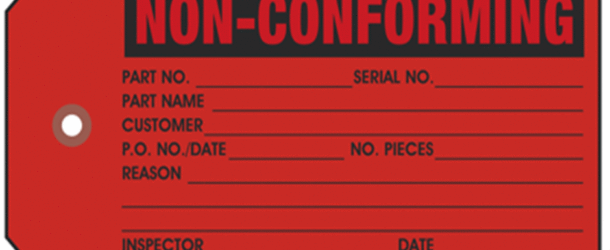Corrective action is one of the foundation elements of quality management and is essential for sustaining improvement of the QMS. The main concept of corrective action promotes a systematic analysis of quality problems that have already occurred and the elimination of any root causes of nonconformities through the implementation of controlled measures.
Determination of the root causes
When a nonconformity is detected and reported, it must be investigated, and it is required to methodically identify and correct or remove its root cause. The purpose of investigation is to determine the root cause of the nonconformities and to suggest recommendations of possible solutions. A root cause is product or process parameters that did not meet their conditions; for example, functionality, performance, safety, or intended use. This issue is well discussed in Section 8.3 — under section Investigating and identifying the root cause of the nonconformity. Please refer to this section for relevant requirements and applicable techniques for identifying the root causes of nonconformities. The book reviews all possible root causes that must be systematically identified in the organization. The investigation shall be recorded and the records shall be maintained as quality records.
Evaluation and determination of need for a corrective action
After identifying the root cause that led to the nonconformity, you must decide whether a corrective action is necessary. An effective review and evaluation is one that gathers all the relevant information and evaluates it, using the right tools and functions (or roles) to help understand the meaning of the data. This is why the activities and inputs related to the nonconformity must be defined. The inputs for the evaluation include:
- The review of the nonconformity
- Identification of affected devices and recipients of the devices
- The identification and location of the root cause
- Identification of all the quality documentation related to the nonconformity
- Identification of all regulations, standards, or directives that may set requirements for the review
- Evaluation and analysis of risks affecting other elements, scopes, areas, or functions of the product
The question is whether the deviation is considered a nonconformity or is tolerable. Intuitively, deviation or variation from the specification is considered a nonconformity when process specifications have not been met. There are, however, cases where the deviation is considered and accepted. Not every deviation will prevent the product from meeting its requirements. It is the responsibility of the organization to define what deviations are acceptable. The book suggests a review for measuring the severity of the nonconformity and to decide whether a corrective action is actually required.
Planning, implementing, and documenting the corrective action
After the first reaction to the nonconformity, the analysis of the root cause, and deciding that a corrective action is necessary, it is required to initiate a corrective action—an activity that will eliminate the cause of the nonconformity and prevent its recurrence. Elimination of the nonconformity means the correction of a product or a process with the assurance that the nonconformity will not happen again. Implementing corrective action includes planning activities in order to correct identified deviations and variations from the objectives. Your goals should be to
- Eliminate the cause of the detected nonconformity
- Prevent potential nonconformity
The elimination of the nonconformity must be effective. This means that objectives for the corrective actions of elimination are to be determined, and a control is to be implemented to ensure that they will be achieved. In the spirit of the ISO 13485 Standard and the process approach, the issue shall be planned and incorporated into the QMS. Chapter 8.5.2 suggests guidelines for planning and carrying out a corrective action. In practice, the planning of the corrective action is to be documented and will serve as a quality record. Although the standard does not specify what the exact details to be documented are, here are some of the necessary details.
Verification of the corrective action
One of the controls that will be submitted to the corrective action is to review unanticipated effects of the corrective action on the device. For example, the corrective action does not adversely affect the ability to meet applicable regulatory requirements. In other words, the planning of the corrective action shall be aligned with relevant regulatory requirements. This will be affected by the type and class of the medical device and its associated regulations in the relevant regions where the medical device is marketed. Another critical is that the corrective action does not adversely affect the safety of the medical device. Please refer to the book for further details about this issue.
Other issues that are discussed in the book regarding corrective action:
- Effectiveness of the corrective action
- Updating the relevant documentation
- A documented procedure
- Maintaining records
This webpage contains only a fragment of the chapter 8 – Measurement, analysis and improvement from the book:ISO 13485:2016: A Complete Guide to Quality Management in the Medical Device Industry, Second Edition published by:


Comments are closed.